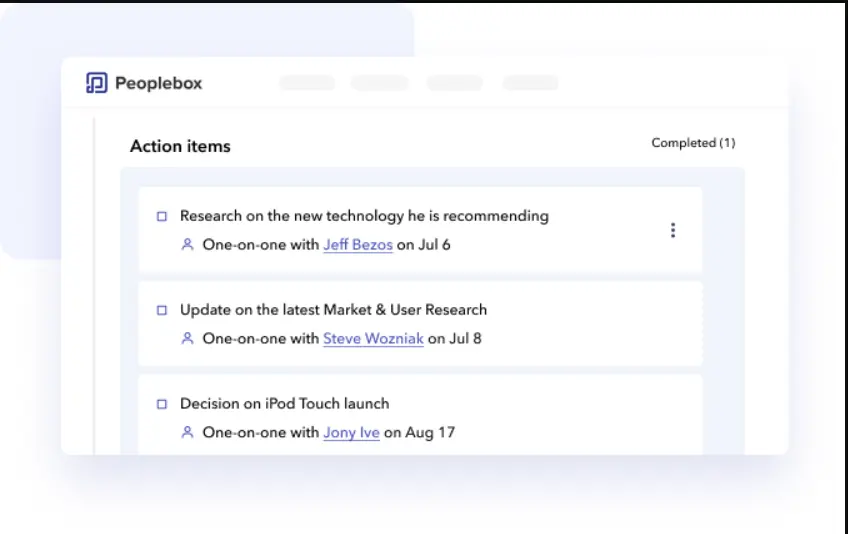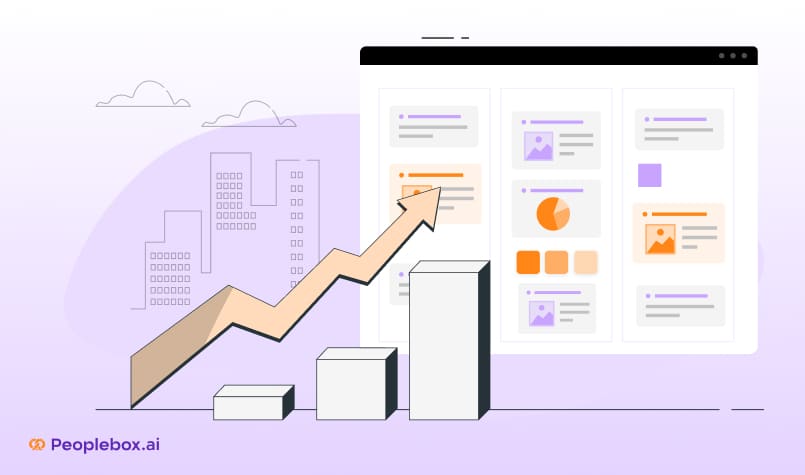Earlier, performance review was more just a routine HR process but today they hold the power to decide one’s career. And that’s not it.
Not only do they affect the career of the employees, they affect your company’s overall performance.
According to a Deloitte study, companies with effective employee performance reviews are 1.4 times more likely to achieve their financial goals and are 4.9 times more likely to manage change.
Despite the ubiquitous nature, many companies struggle to implement a robust performance review system that makes employees feel comfortable and perform their best while promoting company efficiency. This mostly happens because of the high disconnect between the need for performance reviews and its proper implementation which leaves people feeling dissatisfied.
In this blog, we are taking you through a deep discussion of what performance reviews are and what an ideal performance review entails.
What is a Performance Review?
Performance reviews are simply a formal process of performance evaluations or appraisals of employees. It helps access and evaluate the performance of employees in their job roles and their contribution to the company.
While there are different types of reviews, a typical performance review includes meetings with the manager where the employee’s performance, expectations from them, achievement of the set goal, and future action plans are discussed.
It serves as a valuable tool for managers and employees. Managers and companies gain insights into how they can improve their workforce performance. It helps them know how they can align individual performance with organizational goals and make decisions like promotions, appraisals, etc.
Employees gain insight into their strengths and weaknesses, understand career prospects in the company and receive feedback and guidance on how to improve.
Preview in new tab
In short, performance reviews are a crucial part of strategic performance management that helps organizations gain an edge in the market.
Types of performance reviews
There are various types of performance reviews and each one of them is designed to assess employee performance from different perspectives. Some of the most commonly used performance reviews are:
360-degree reviews
This review system includes gathering feedback from various sources including managers, peers, subordinates, etc. This review aims to take into account the multiple perspectives for accessing employee performance and offers a well-rounded assessment. It eliminates any blind spots, fosters collaboration and is extremely useful for professional development.
A tool becomes indispensable here, as it provides you with all the necessary features to collect reviews from everyone and get reports and unbiased analysis. For example, Peoplebox, allows you to conduct 360 degree reviews right from Slack within minutes.
- Peer Review
In this review, colleagues who have worked closely with the employee provide feedback. This review helps in getting insights into their teamwork, collaborative strengths, their dynamics in the team, etc.
Self Assessment
In this assessment, employees evaluate their own performance. The employee does the evaluation typically against pre-defined criteria. This evaluation helps employees take ownership of their professional development, encourages self-reflection and serves as a starting point for discussion with managers during the performance evaluation process.
- Team performance review
This is a collective review of the entire team instead of just focusing on one individual. This helps in understanding how well the team is working together, their goal achievements, etc. You can understand the group dynamics, areas of improvement for the team and aligning team efforts to the organizational objectives.
- MBO
MBO or Management By Objectives is a goal-oriented approach to performance review where managers and employees set goals together. It is an outcome-focused review that provides clarity on expectations and measures performance against concrete goals.
- BARS
BARS or Behaviorally Anchored Rating System combines both qualitative and quantitative assessment. It uses specific behavior indicators for evaluating employee performance. This review approach gives managers a detailed assessment of employee behavior, reduces subjectivity in performance evaluation and helps employees understand the expected behavior.
Why Are Performance Reviews Critical?
A Gallup study found that organizations implementing regular performance reviews and feedback processes had 14.9% lower turnover rates.
Another study suggests that 65% of employees would like more feedback than what they currently get.
Adding to this is the PWC study that 60% of young employees prefer receiving feedback daily or weekly
These statistics show how critical performance reviews are. They not only contribute to employee development and workplace discipline, but also help employees engage, understand their strengths and weaknesses, and offer them job satisfaction and acknowledgement.
Performance reviews also help document employee performance for addressing workplace issues, justifying decisions, rewarding employees, promoting them and offering raises.
Objectives of Performance Reviews
Performance reviews serve several important functions. Here are some of the objectives that are key to their purpose.
Goal setting and alignment

Performance reviews help set clear goals and objectives while aligning them with the organizational objectives. It helps set performance expectations and helps employees understand their role in achieving the organizational goals. When you use a tool, you can further set KPIs to monitor how well employees are working towards the goal.
Provide frequent feedback
Regularly conducting performance reviews offers a structured way for managers to provide ongoing feedback to employees. This helps employees improve their performance, and make adjustments quickly and in real-time, rather than waiting till the end of the year reviews.
Encourage and reward good performance
Acknowledging good performance and rewarding employees encourages positivity and motivates employees to perform better. Performance reviews help you recognize and reward employees for their contributions in short periods of time rather than once a year during annual reviews.
Guide poor-performing employees
Performance reviews help you identify performance issues and develop strategies to make improvements. It helps them understand shortcomings and provides them with a roadmap to make changes and improvements.
Simplify promotion decisions
Decisions involving promotions are difficult to make and performance reviews help assess employees readiness for promotions. It provides insights, reviews data to make decisions about promoting them and identifies areas of development.
Charting development plans
When you review employee performance, you get details on their current performance, expertise and capabilities. This helps you chart out development plans for an individual employee based on their strengths and weaknesses.
Creating an action plan for improving performance

Action plans outline specific timelines and steps for performance improvement. They give you clarity and establish accountability. Performance reviews help you develop action plans collaboratively during the review period as you address the areas of improvement.
Cadence of Performance Reviews
Performance review cadence depends on the organization’s culture and its needs. Here are the most widely preferred performance review frequencies:
This is a comprehensive review of employee performance which is conducted once a year. It focuses on reviewing the performance, achievements, and goals of the past years and includes goal setting for the next year.
- Mid-year
This is a mid-year review conducted six months after the annual review to assess the progress on the annual goals, provide feedback and make any necessary adjustments in the performance.
- Quarterly review
These are conducted every three months to provide timely feedback, suggestions and advice on course corrections. It is a very effective review system in a dynamic environment.
- Monthly
These are the frequent reviews that help establish a frequent feedback loop and are very effective in roles where performance metrics change rapidly.
- Fortnightly/Weekly
These reviews happen every two weeks for feedback in areas that require immediate feedback like marketing or sales roles. This also comes in handy for teams to oversee the project’s progress and ensure that everything is running smoothly and as decided.
For an effective performance review to take place in an organization, a combination of these reviews is suggested. Striking a balance using frequent check-ins and a comprehensive review helps you effectively monitor performance and ensure they stay aligned with organizational goals. For this, a goal-setting and performance-management tool is crucial
Conclusion
Performance reviews are not mere assessments but are catalysts for professional growth for employees and business growth for companies. As you master the art of offering the right feedback at the right time, you get a dedicated workforce that are committed to excellence. When you use feedback and insights from performance management tools like Peoplebox, you propel your organization towards success.







